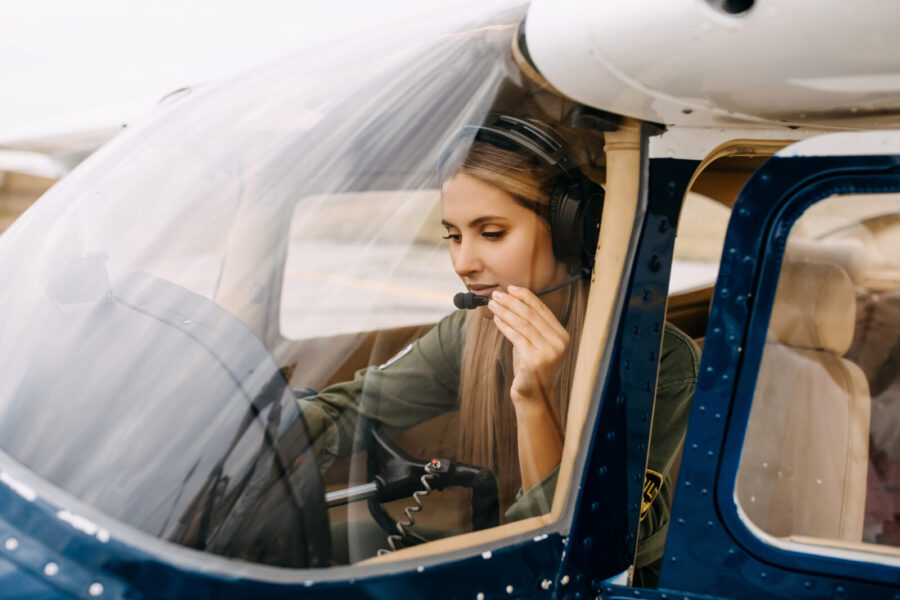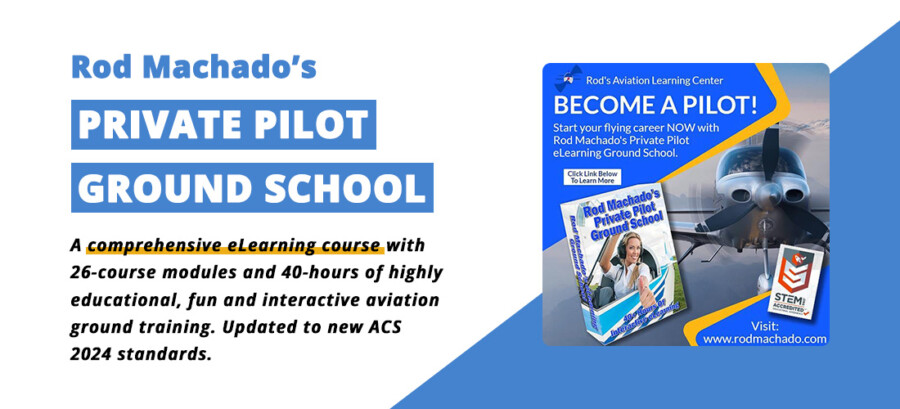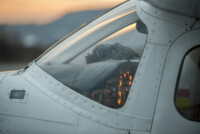10 Questions to Ask Yourself When Buying an Aviation Headset
3 February 2022 | Updated on November 24, 2024
When aviation headsets first began to be used, they were bulky and uncomfortable. However, aviation headset technology has come a long way in the last few decades. Now they are lighter-weight, more comfortable, and have better sound quality than ever before.
Hundreds of different models are available on the market today, each with its own features. But how can you possibly know which aviation headset is right for you, with so many options out there? To help you make an informed decision, we created an extensive aviation headset buying guide some time ago, which has now become are most read piece of content on Hangar.Flights!
Now, to help you even better, we decided to expand some more on the subject and list a few additional interesting questions to ask yourself before purchasing a (new) aviation headset in 2022. Here are ten of the most important questions that should be asked!

1. What aircraft type(s) will I be flying?
This is the first, and probably most important, question to ask yourself when looking for a headset. The type of aircraft you fly determines what kind of noise level you’re subjected to in the cockpit (we’ll look at this next) and which headset jacks you will need.
Especially the latter is a very practical feature to keep in mind, as different types of aircraft may not be compatible with different types of headset connectors, and headset technology in general.
In general, aviation headsets will come in 4 different types of jacks:
- Standard twin/dual plugs: also referred to as GA plugs, these are most common in general aviation aircraft.
- Helicopter/military plug (U174): You may find these in most military aircraft and military/civil helicopters.
- 6-pin LEMO plug: when using an ANR headset that requires batteries to run, this type of plug will supply power to your headset through the aircraft’s battery; it can be found in some privately owned or commercial aircraft.
- Airbus XLR plug: Airbus aircraft are usually equipped with another type of plug, XLR, which is also a popular connection type used in the audio industry.

Depending on the aircraft type you are flying, you need to make sure the headset you purchase has the right connectors to connect to the aircraft’s radio/intercom.
For most GA (student) pilots, a simple dual plug is all you need. However, if you’re planning on flying multiple aircraft that use different types of connectors, it could also be a good idea to just purchase some adapters that make it easy to use the same headset in different types of aircraft.
2. How noisy is my cockpit environment?
One of the main purposes of wearing an aviation headset is to protect your hearing.
Our human hearing system is sensitive to sound frequencies between 20 Hz and 20,000 Hz, and it’s most vulnerable to sounds with higher intensity, such as a rock concert or, more importantly in our case, airplane engines (120-130dB).
When you are exposed to sounds of 90dB and more, you risk damaging your inner ear, resulting in temporary or worse, permanent hearing loss. For pilots, this poses a significant risk, not only to our health but also to our career and future in aviation. Picking an aviation headset that protects you from the sound levels in your cockpit environment is an absolute must.
If you fly mostly in a quiet environment, such as commercial jet cockpits, noise reduction is less of an issue than if you’d be flying in noise piston aircraft, turboprops, smaller jets or helicopters. For those noisier environments we also recommend looking at Active Noise Reduction (ANR) headsets, as these will offer an extra level of protection, and comfort.
Want to learn more about PNR, ANR and DNR? Check out our separate detailed article on noise reduction technologies:
3. Which features do I need or want?
Just like with any important purchase, it’s always a good idea to differentiate between the must-haves and the nice-to-haves. This feature-check will help you when looking for aviation headsets, as it allows you to prioritize what’s important.
When buying a (new) headset, we always recommend to at least look for the following: a comfortable headset that does the job and protects your hearing. You don’t need all those fancy buttons and features when just starting out, unless of course, your budget allows for a top-of-the-line headset with all the bells and whistles you can imagine.
Some features that are nice to have in aviation headsets include: separate volume control knobs, ANR capabilities, wireless functionality, and advanced Bluetooth connectivity for listening to music or connecting to your iPad.
If you’re flying in a very noisy environment, as we mentioned above, Active Noise Reduction can become a must-have rather than a nice-to-have.
4. How often do I fly?
The right aviation headset is a subjective topic, and the answer will vary when asked different pilots. One of the main factors that will influence the type, brand and price range of your headset is how long you will be using it at a time.
If you’re just going for a short flight around the pattern every other week, you may not need the most expensive, comfortable and feature-richt headset. If, on the other hand, you are flying many hours at a time, for many days in a row, it may be a good idea to invest in a more high-end model that provides increased comfort and all the features you may need.
In the end, it all depends on your specific situation.


5. How long will I wear the aviation headset at a time?
As mentioned above, it may be a good idea to invest in a headset that offers some more comfort once you start doing longer flights. In our experience, comfort is not a big issue when doing shorter training flights of about an hour, as most headsets on the market today do a very decent job in this regard.
However, once you start doing some longer (cross-country) flights, the difference in comfort between a cheaper headset and a more expensive model does start to be noticeable.
For me personally, I started my flight training with the cheapest, but still decent, model I could find at the time. Near the end of my training, during the cross-country flights, I upgraded to an improved model with ANR, as this gave me some more comfort and less clamping force on my head.
When I finished my training and started to fly more (I became a towplane pilot for gliders), I invested in a top-end model, as I was often flying for over 4 hours a day in the summer and needed some more comfort, hearing protection and features. My older headsets are now serving well as headsets for my occasional passengers!
6. How important is comfort to me?
We already touched upon the subject of comfort, when it comes to the weight of a headset and how often you fly. While some people don’t care too much about spending time finding the most comfortable headset possible and just pick one that has good reviews and meets their budget, other people do find comfort to be the most important factor, and they would gladly spend the extra dollar for a comfortable headset.
Things that determine the comfort of a headset include the springs used to clamp the headset around your head, the headband and ear seals. Leather cushions usually provide more comfort than gel or other materials. Luckily, most brands offer earpads and cushions in different materials, making it easy to switch them when desired.
7. Do I want to try out the headset before buying?
If you can, it’s a always good idea test out the headset of your choice in flight, to make sure you’re making the right decision. Often it’s after flying with it the first few times that you can really experience the way it feels and functions.
It’s also quite common that aviation headset manufacturers have a network of aviation shops they work with. This way, you can visit one of these stores and try out an aviation headset before purchasing it.
If you do prefer ordering a headset online because of its convenience, don’t be afraid to use the return service after purchasing a headset that doesn’t fit as well as you hoped.


8. How much do I want to spend?
As we all know, aviation is expensive. Aviation gear like headsets are no exception.
When it comes to picking the right aviation headset, a lot will depend on the budget you have and the amount you are comfortably willing to spend on it. Depending on the features you need/want, you may need to look at more expensive models on the market.
But the important thing is to just set a budget for yourself and stick to it. If you can afford a more expensive one, it could be the right thing to do. When in doubt, the best advice is still to buy the most headset you can afford.
9. Will I use the headset in a professional environment?
For professional use, it’s also important for the headset to be certified by the FAA and/or EASA. Your headset needs to meet performance requirements of the FAA to be used in any civil aircraft.
One such authorization is TSO, which stands for Technical Standard Orders. Although technically not a requirement, it’s an authorization from the FAA that the headset meets the minimum performance standard for specified materials, parts, and appliances used on civil aircraft.
For example, the Bose A20 is certified to FAA TSO-C139 and EASA ETSO-C139 standards.
You are allowed to use non-TSO-approved headsets in a commercial (as long as they meet the other product requirements like all headsets today), but your employer may only allow TSO-approved headsets. So it’s always wise to check with your employer first about their requirements for a headset.
10. Am I buying a headset for myself or for my passengers?
Finally, it’s a good idea to think about who will use the headset (the most). When just starting out your aviation journey, you’ll probably just be buying a headset for yourself. However, after you receive your license and become a licensed pilot (yeah!), you will usually be taking passengers with you on a regular basis.
Although protecting their hearing and making sure you can communicate clearly during the flight is still very important, many of those nice-to-have features, such as Bluetooth, may not necessarily be needed.
In this case, it’s a good idea to buy a proper quality, possibly more expensive, headset for yourself, and a less expensive and more basic one for your passengers. In my own experience, I upgraded my headset to a better model once I finished my private flight training and kept the older, more basic but still decent, models for my passengers.


Conclusion
Aviation headsets can come with a wide range of prices and features. If you’re just starting out, there’s no reason to go all out on the highest-end aviation headset available. But if you are looking for an aviation headset that caters to a more demanding cockpit environment, it’s usually worth spending the extra dollar on it.
The right aviation headset is not only an investment in your flying career, it’s also an investment in your health. And when in doubt, it’s always good to buy the most headset you can afford.
Learn more about picking the right aviation headset for your personal needs, in our extensive 2024-updated buying guide:


































